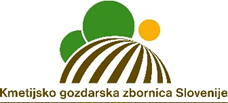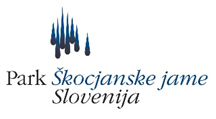The project: "Integrating water elements in agroecosystems to create biodiversity hotspots on farms and improve the potential of agricultural land in the face of climate change" is a European Innovation Partnership (EIP) project.
The core aim of the project is to raise awareness and train stakeholders – farm owners, the wider and/or narrower professional and general public - to acquire key knowledge, experience and skills for the long-term sustainable conservation and restoration of biodiversity and better use of the ecosystem functions and services of water bodies as an element or a landscape feature of the agricultural landscape.
Project objectives:
- create an ecologically richer agricultural areas;
- increase diversity of habitat types in the farmland areas, and indirect conservation of habitat types of a nature conservation importance in the farmlands;
- maintenance of plant and animal species populations in the face of extreme weather conditions, the frequency of which is increasing with climate change (drought, heat);
- restoring, conserving and enriching existing water bodies;
- integrating water bodies into the farm landscape and improving the value of agricultural products of the farmlands;
- increase awareness among farmers, agricultural advisors and other stakeholders in the area of the importance of water bodies for the conservation and enhancement of species diversity;
- increase capacity of farmers and other stakeholders in the area in the introduction and maintenance of water bodies to ensure increased species diversity;
- transfer of knowledge into practice;
- dissemination of project results.
The main objective of the project is to develop a model or guidelines to address the holistic aspect of water bodies in the space of farms, both the spatial aspect of the integration of water bodies in the agricultural space - the importance of water bodies as a landscape feature, and their ecological aspect - water bodies as a landscape feature with a high potential to support the development of different aquatic and peripheral habitat types and thus to support biodiversity, and to mitigate, mitigate or adapt to climate change, while being appropriately integrated into the agricultural space.
Expected outcomes:
- Guidelines for the restoration and conservation of existing water bodies (practical test of solutions);
- Guidelines for the introduction and maintenance of new water bodies on farms (practical test of solutions);
- support for biodiversity (conservation and enhancement, especially of species associated with aquatic and wetland habitats, which are globally threatened) and increase in landscape diversity/heterogeneity;
- increased awareness among farmers and landowners of the importance of different landscape elements, with an emphasis on the positive effects of biodiversity on the agricultural economy and production;
- maintaining a favourable status of surface and groundwater conditions, and contributing to the improvement of the moderate/poor status of downstream restored/impounded water bodies through the interception of eroded particles, nutrients and phyto-pharmaceutics;
- impacts on the local microclimate and benefits during heat stress events;
- increased water availability for on-farm use during drought periods;
- training of farm owners on the importance of water bodies, their restoration, input and maintenance;
- project knowledge gained and disseminated to broader range of farms owners, professionals, students, general public, etc.;
- positive impact on the agricultural production capacity of the partner farms.












The project is co-financed by the Republic of Slovenia and the European Union from the Agricultural Fund for Rural Development, the value of the co-financing is € 249,759.32. The project is implemented under Measure M16: Cooperation of the Rural Development Programme 2014-2020, 5th call for proposals for sub-measure 16.5 Support for joint action to mitigate or adapt to climate change and for joint approaches to environmental projects and permanent environmental practices for EIP projects.
More info on financing mechanism: Evropski kmetijski sklad za razvoj podeželja in Program razvoja podeželja RS.


